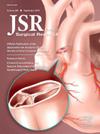Forecasting Pediatric Trauma Volumes: Insights From a Retrospective Study Using Machine Learning
IF 1.8
3区 医学
Q2 SURGERY
引用次数: 0
Abstract
Introduction
Rising pediatric firearm-related fatalities in the United States strain Trauma Centers. Predicting trauma volume could improve resource management and preparedness, particularly if daily forecasts are achievable. The aim of the study is to evaluate various machine learning models’ accuracy on monthly, weekly, and daily data.
Methods
The retrospective study utilized trauma data between June 1, 2013, and October 31, 2023, from a level I/II pediatric trauma center. Data were organized monthly, weekly, and daily, which further delineated into seven groups, yielding 21 cohorts. Models were evaluated using time-series forecasting metrics. In addition, the models were tested for real-world applicability by forecasting trauma volumes 3 mo, 12 wk, and 31 d ahead for monthly, weekly, and daily predictions respectively. The predicted values were then compared with the actual data.
Results
The total of 12,144 patients’ data was utilized to create and evaluate models. 14 forecasting models for each of 21 groups were developed. Monthly predictions generally outperformed weekly and daily ones. Although the Silverkite model excelled in monthly predictions, the one-dimensional convolutional layer model was most accurate for daily predictions. Real-life simulations showed the Prophet model performing best for monthly predictions, with no clear winner for weekly predictions.
Conclusions
This study found monthly forecasting most accurate. Although many models outperformed their Naïve counterparts, performance varied by grouping. Real-world simulations confirmed these findings. Despite high accuracy in monthly predictions, the study's generalizability is limited, and daily trauma prediction needs improvement.
预测儿科创伤量:使用机器学习的回顾性研究的见解。
简介:在美国压力创伤中心,儿童枪支相关死亡人数不断上升。预测创伤量可以改善资源管理和准备工作,特别是如果可以实现每日预测。该研究的目的是评估各种机器学习模型在月、周、日数据上的准确性。方法:回顾性研究利用2013年6月1日至2023年10月31日的创伤数据,这些数据来自一家I/II级儿科创伤中心。数据按月、周、日整理,进一步划分为7组,共21组。使用时间序列预测指标对模型进行评估。此外,通过分别提前3个月、12周和31天预测每月、每周和每日的创伤量,测试了模型在现实世界中的适用性。然后将预测值与实际数据进行比较。结果:共12144例患者的数据被用于创建和评估模型。为21组中的每组开发了14个预测模型。月度预测通常优于每周和每日预测。尽管Silverkite模型在月度预测方面表现出色,但一维卷积层模型在每日预测方面最为准确。现实生活中的模拟表明,“先知”模型在月度预测中表现最好,而在每周预测中没有明显的赢家。结论:本研究发现月度预测最准确。尽管许多模型的表现优于Naïve模型,但分组的表现各不相同。真实世界的模拟证实了这些发现。尽管每月预测的准确性很高,但该研究的普遍性有限,每日创伤预测需要改进。
本文章由计算机程序翻译,如有差异,请以英文原文为准。
求助全文
约1分钟内获得全文
求助全文
来源期刊
CiteScore
3.90
自引率
4.50%
发文量
627
审稿时长
138 days
期刊介绍:
The Journal of Surgical Research: Clinical and Laboratory Investigation publishes original articles concerned with clinical and laboratory investigations relevant to surgical practice and teaching. The journal emphasizes reports of clinical investigations or fundamental research bearing directly on surgical management that will be of general interest to a broad range of surgeons and surgical researchers. The articles presented need not have been the products of surgeons or of surgical laboratories.
The Journal of Surgical Research also features review articles and special articles relating to educational, research, or social issues of interest to the academic surgical community.

 求助内容:
求助内容: 应助结果提醒方式:
应助结果提醒方式:


